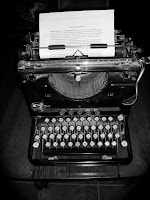Geography is the study of man and land and the interrelationships between them.
Professor David W. Lantis
CSU, Chico
1971
ONE CANNOT SEPARATE a population of living things from the resources necessary to sustain it. James Algar’s film “Nature’s Half Acre” (produced in 1951 by Disney) made this point over and over.
When the principal of Rosedale School, Eldred Self, rewarded the “good kids” with a film party, and this was the film, I was elated. I probably saw the footage four or five times beginning when I was eight.
During the formative years, long weekends and vacations were spent in the old Ford Ranchwagon traveling from one place to another exploring.
Dad would hike us into the Yahi Country northeast of town. Mom once drove me down to Death Valley.
From as early as I was able to sling a pack on my back, we traipsed all over the Sierra in California and the cascades in Washington. All the while, we learned about the Indians who came before us, or the gold seekers, or the lumbermen. We’d think about living in houses made of sticks or bark. Or canvas.
We’d imagine the joy surround trips to town, once towns finally appeared. And around campfires, we’d hear stories – some factual, some not so much – about who lived here, why they came, what sustained them and why they left.
Or how they died.
EARLY IN MY COLLEGIATE CAREER, I decided my major would be Geography. “What’ll you do with that major?” “Nobody hires geographers.” “What are they going to teach you? How to fold a map?”
What I learned was how things fit together. Why civilization began around the Fertile Crescent – anthropology. How stores with like wares choose to locate in close proximity – economics. How glaciers form and what is necessary to sustain them – climatology. Why evidences of sea floor can be found atop Mount Everest – geomorphology. How the cloud of putty-colored air got locked in over the northern Sacramento Valley – physical geography. Why Constantinople is considered among the crossroads of the world – transportation. How come world maps seem to split the eastern hemisphere and not the western – cartography. Why Rome, Paris, Saigon, London, Shanghai, Lisbon and San Francisco might be centers of thought and creativity, while Oslo, Christchurch, Omaha, Panama City, and Biggs or Lodi might not be – Cultural Geography.
MANY FOLKS WHO RIDE motorcycles are asked, “Why?” They respond with terrific and varied reasons. All legitimate. Yesterday, I drove from home, up I-80 to Colfax; from Colfax into and out of the North Fork of the American to Iowa Hill; from Iowa Hill to Michigan Bluff, then down Gorman Ranch Road to the Middle Fork; thence up the ridge to Foresthill, Auburn and home.
I viewed the original route of the transcontinental railway over the Sierra, piles of slag from dry hole hard-rock mining, flume moorings that supplied water to placer claims, both clear and selective timber harvests, and evidence that a dam would one day be built – but never was.
The tiny brick jail in Iowa Hill suggests primitive criminal justice.
A steel bridge across the American suggests early public works.
The reservoir at Sugar Pine reminds of the relationship between humans and water.
The hundred-mile loop provided field lessons in history, hydrology, transportation, economics and politics. At many points I asked, “Why here?” Followed shortly by, “Oh.”
I WORRY ABOUT THOSE OF US who cannot ask “Why here?” and follow it up sooner or later with “Oh.” It seems to me that citizens of this world who do not understand that quote at the top of this piece are more likely to:
- Drink water with little concern about where it comes from;
- Consume and throw away without grasping that there is really no “away” to throw to;
- Travel paths following ancient routes without realizing the why the past passed this way, or that there even was a past;
- Assume our resources are limitless;
- Assume our people are chosen;
- Assume the future is now; and
- Not grasp the breadth of the continuum we enjoy for only a fraction of time.
There is beauty in both the world’s complexity and its simplicity. I enjoy the ride because of what I can see, learn, figure out or prompt to research as a result of having been on the journey. I need to pause to thank Dave Lantis, Jerry Williams, Bruce Bechtal, Art Kiernan and a number of other CSU Profs for the life-long gift.
And I must not forget Eldred Self.
***
RESOURCES:
“Nature’s Half Acre” may be viewed at http://www.youtube.com/watch?v=meaFIBdGewY
© 2011
Church of the Open Road Press
































